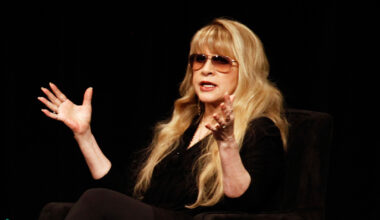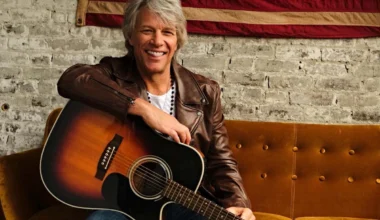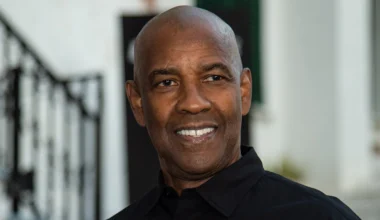Consider, in 2018, how set in stone the identities of the four Beatles appear to be. Over two decades since his murder, the smoothing over of John Lennon’s rough edges – those that were the product of self-perpetuation during his early life – has long been completed. The image that will last for thousands of years is one of the long-haired family man, who spoke of nothing but peace and love.
Paul McCartney gets a rougher deal: he is destined to be the uncool, cheesy half of the greatest songwriting partnership ever. Personally, I have always argued for him and against this perception, but when you consider that the guy went on bloody X Factor and duetted with bloody Jedward, you kind of have to conclude that he has made his own bed.
Ringo Starr seems doomed to be defined – via his announcement a several years ago that he would no longer be signing autographs – as the eternally grumpy old curmudgeon. All of which means that, 40-odd years after they split, George is the coolest Beatle, the connoisseur’s Beatle. “After all,” wrote The Huffington Post, when previewing Martin Scorsese’s recent Harrison biopic, “we’re not hearing about [Scorsese making] Paul McCartney: Band On The Run or Ringo Starr: Beaucoups Of Blues.”
Forevermore, then, he will be remembered as the Beatle who got the band thrown out of Germany because he was playing in the clubs underage; who had all the best one-liners – responding to George Martin’s out-of-politeness request to say if there was anything in the studio they didn’t like with a wry “For starters, I don’t like your tie”; who quickly saw the hippy movement for what it was (“I went to Haight-Ashbury,” he said, “expecting it to be this brilliant place, and it was just full of horrible, spotty, dropout kids on drugs”); who brought a social conscience to rock with the Concert For Bangladesh; who had the strength-of-character to remain friends with Eric Clapton even after he stole his wife; who having been stifled in The Beatles (“Paul McCartney ruined me as a guitarist,” he said in a late-on interview), had the most exciting and interesting post-Fabs career, turning in the sprawling, brilliant ‘All Things Must Pass’ ( the hipster’s solo-Beatle record of choice), remortgaging his Henley home to fund The Life Of Brian and forming a new group with Tom Petty, Bob Dylan and Roy Orbison.
It should be made clear, from the off, that the Scorsese film ‘Living In The Material World’ is great. At three-and-a-half hours long, it goes into immense detail in certain areas, in much the same manner as his Bob Dylan film ‘No Direction Home’ did. There is a huge cast of characters, from Paul and Ringo, Eric Clapton, Tom Petty and Astrid Kirchherr, to Harrison’s son Dhani and widow Olivia, who also produces. Maybe because of this, and somewhat inevitably, all of the memories here are largely fond. Even on the subject of his infidelity, Olivia comes out with a line as good as any of her husband’s fondly remembered quips: “What’s the secret of a long marriage? Don’t get divorced!”
For all its strengths, there is a fair bit of glossing over. Musically, you get a quite preposterously frightening Phil Spector chipping in on a lengthy look at ‘All Things Must Pass’, but 1982’s ‘Gone Troppo’ doesn’t even get mentioned. In fact, neither does 1987’s ‘Cloud Nine’ – even though it was hugely successful – undoubtedly because it’s not a “cool” album. Just look at the cover!
More so, the fact that he – as McCartney has it – “liked the things men like” is not taken much further than that. The on-record claim by a pseudonymed Los Angeles prostitute “Tiffany” that she gave the then-married Harrison a blowjob while he played and sang George Formby songs on a ukelele is not followed up. Neither is his dalliance with Ron Wood’s wife, Krissie, who he took to meet Salvador Dalí in Spain. Nor the fact that he slept with Ringo’s wife, Maureen. Nor his rumoured fling with Madonna in the ’80s.
He did do great things for charity with the Concert for Bangladesh, but then he also moaned relentlessly about the tax he had to pay, and fought for every last penny, from ‘Taxman’ through to buying property in Switzerland right at the end of his life. He was all about living a spiritual existence, but loved Formula One. He was a complex, conflicted guy, inevitably more complex and conflicted than even as great a filmmaker/documentarian as Martin Scorsese can capture in a not-too-long three-and-a-half hours.
But yeah, it’s easy to buy into the identity of George Harrison as the coolest Beatle, and I for one do. It’s because you can sympathise with his position in the Fabs, trying to push through his songs, battling against the disinterest of Lennon and McCartney. There is nothing more heartening than that famous story of Frank Sinatra telling Paul that his favourite Lennon/McCartney song was George’s ‘Something’. He was bullishly pushed aside by McCartney, who taped the lead guitar on ‘Ticket To Ride’ and ‘Another Girl’ on ‘Help!’ out of sheer impatience with his bandmate. But also on that album, George was displaying what would become a continuing fondness for bringing new elements to the table of The Beatles – playing a primitive incarnation of the wah-wah pedal on his own ‘I Need You’, and messing around with a sitar between takes on the set of the Help! film.
And in terms of the psychedelic Beatles, he was behind their heaviest, most out-there foray: ‘It’s All Too Much’ from the ‘Yellow Submarine’ album. This brilliant song was recorded just prior to the release of ‘Sgt Pepper’, but was pushed back off the later ‘Magical Mystery Tour’. There are some strong songs on ‘Yellow Submarine’, but this one is probably the best. Certainly, it is a better song than Macca’s ‘All Together Now’.
In the aftermath of The Beatles, with McCartney being commercially successful but critically mauled and Lennon being self-consciously “difficult”, George initially hit a nice middle ground, and raced ahead of his former bandmates. His triple album ‘All Things Must Pass’ is a truly great, ambitious rock’n’roll folly, produced by Phil Spector and clearing the decks of the many, many songs that never made it on to Beatles albums. As such it must be considered more than merely a great record: it’s also a document of an underdog finally triumphing against the odds.
The financing of films is an aspect delved into significantly in Scorsese’s film, and is another huge plus point next to George’s name. The world is undeniably a better place for the existence of The Life Of Brian and Withnail & I, the former of which would never have been made were it not for him. EMI pulled funding at the absolute last minute, but George came up with the £6 million the Python gang needed, just because he “wanted to see the film”. This, it was noted by Terry Jones, made it the most anyone has ever paid for a movie ticket in cinema history. It certainly did a lot to establish the ongoing perception of George as the coolest Beatle.
Then there’s the small matter of the Travelling Wilburys, who were better than any self-indulgent bunch of rock stars “just having fun” had any right to be. Their first album is great, and re-energised all who partook in it, most notably Tom Petty, who came back with his first solo album ‘Full Moon Fever’ – widely regarded as one of his finest, and certainly his most commercially successful. And look who popped up in the video for its biggest single!
So all of this contributes to an overall view of a man who seemed to have just about the right balance of enthusiasm and cynicism, recognised his own flaws, and appeared to have emerged from the wreckage of the Biggest Band Of All Time happier and more balanced than anyone else who was involved with it. History is right: George Harrison is the coolest Beatle.







